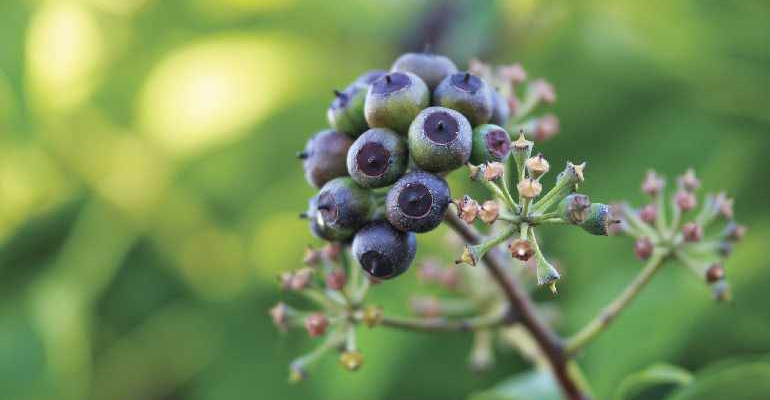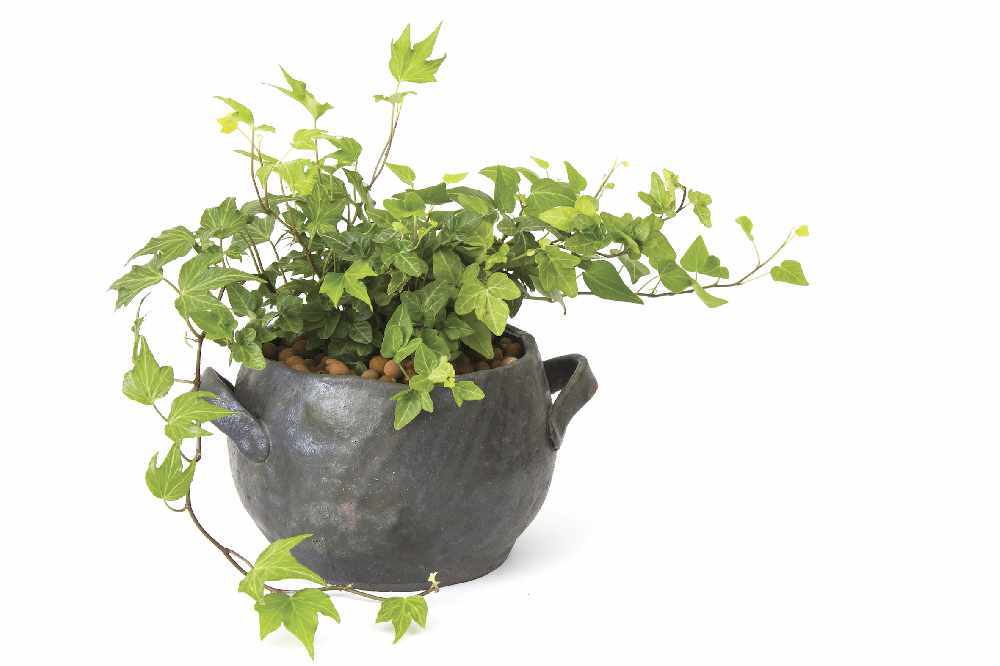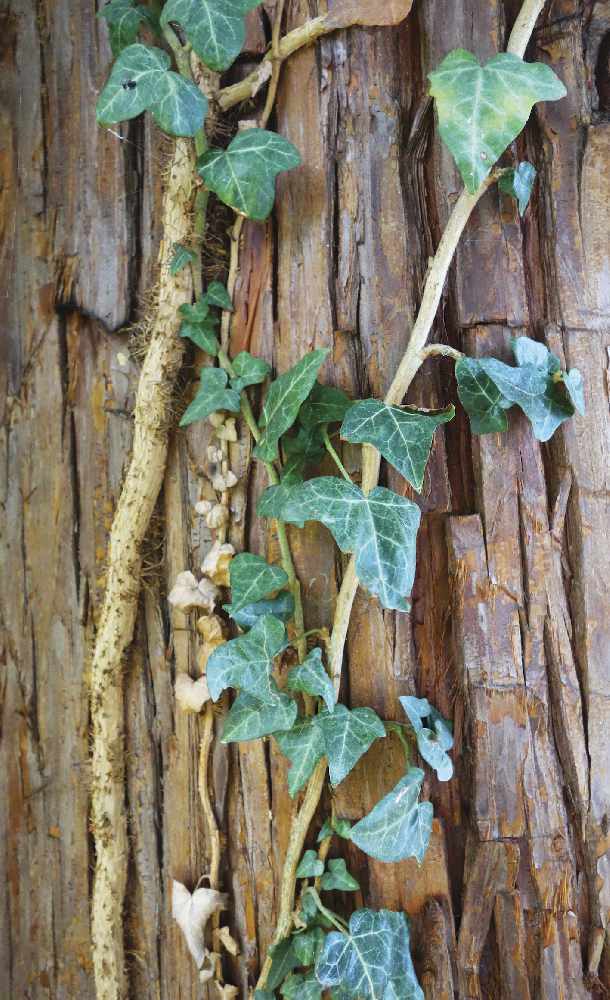
Overlooked by many – and wrongly reviled by others, ivy plays a vital role in the natural landscape and makes a terrific garden plant, writes Flo Whitaker
Only a few evergreen plants are indigenous to the British Isles. Common ivy (Hedera helix) is one of them. Ivy has a curious, two-stage growing process. Young growth makes dense, non-flowering mats of foliage. On maturity, it becomes arboreal, (tree like) and starts climbing; producing distinctively rounded leaves, pollen-rich yellow flowers in late autumn, followed by charcoal/black berries throughout winter.
These high-energy foods provides sustenance for wildlife at times when other food sources are scarce. Contrary to popular belief, ivy does not ‘strangle’ trees, but its sheer weight and wind resistance can inadvertently damage trees and structures. An occasional and judicious cutback of ivy growth will keep things in check.
Like those other Yuletide sentinels; fir, holly and mistletoe, ivy held great significance for our ancestors. Its ability to thrive in winter won it noble attributes of strength, stoicism and eternal life. Pagan Green Man images often depict him wreathed in an ivy crown. At a modern day wedding, ivy still retains a presence; in a floral display, or in motif form, embroidered onto a veil or iced onto a cake. Those twining stems that have long represented fidelity and ‘ties that bind’ are still quietly weaving their ancient magic.

No winter garden is complete without ivy and there are many varieties to choose from. ‘Gold Heart’ has striking dark leaves with buttery yellow centre markings that positively glow under gloomy skies. ‘Sulphur Heart’ is super-vigorous and superhardy, (down to -15°C, or more). It will quickly climb a wall or establish itself as ground cover in challenging places where other plants fail. The huge leaves can reach 20cms in length and are richly marbled with prominent creamy/white veins. It requires regular cutting back to keep it under control, but is a sensational plant for a winter garden and makes a stunning focal point when grown over an arch.
Small-leaved ivies are invaluable for winter-themed patio pots and hanging baskets as they grow slowly during cold conditions and will not swamp dainty gems such as violas and cyclamen.
Hedera ‘Ducks Foot’ is well-named. Its soft sage green leaves have rounded edges that resemble the webbed shape of a ducks foot, whereas ‘Sagittifolia’ has dense, arrow-shaped foliage in deepest holly green and is particularly useful for topiary work. If you’re an anxious topiary newbie, a small ivy plant and a simple pre-formed wire topiary frame is a good way to start. Plant the ivy, then set the frame over the top. As the ivy grows up through the frame, simply snip the stems to maintain the desired shape.
You don’t need fancy pruning shears. A robust pair of kitchen scissors will do the job and, if you make an error – never mind. Immortal ivy will soon outgrow a bad haircut.


 Blooming Times: Happy Faces
Blooming Times: Happy Faces
 Blooming Times: Winter Sparklers
Blooming Times: Winter Sparklers
 Homes Extra: Restore, Repair, Recycle
Homes Extra: Restore, Repair, Recycle
 Home Style: A Scandi Winter's Tale
Home Style: A Scandi Winter's Tale
 Blooming Times: Winter Wonders
Blooming Times: Winter Wonders
 Home Style: Bold, Brave & Beautiful
Home Style: Bold, Brave & Beautiful
 Blooming Times: The Answer Lies in the Soil
Blooming Times: The Answer Lies in the Soil
 Blooming Times: Heavenly Hyacinths
Blooming Times: Heavenly Hyacinths
 Legendary Builds with Phoenix Construction Services
Legendary Builds with Phoenix Construction Services
 Blooming Times: Know Your Enemy
Blooming Times: Know Your Enemy
 Bespoke Dreams from Eridge Green Kitchens
Bespoke Dreams from Eridge Green Kitchens
 10 Hot Years: iFit Fires & Flues
10 Hot Years: iFit Fires & Flues
 Home Style: Bold Type
Home Style: Bold Type
 Blooming Times: The Sky's the Limit
Blooming Times: The Sky's the Limit
 Home Style: A Better Way of Life
Home Style: A Better Way of Life
 Homes Extra: Shed Space
Homes Extra: Shed Space
 Blooming Times: Top of the Pots
Blooming Times: Top of the Pots
 Kids Zone: Get the Kids Growing
Kids Zone: Get the Kids Growing
 Home Style: Pastures New
Home Style: Pastures New
 Homes Extra: Let There Be Light
Homes Extra: Let There Be Light